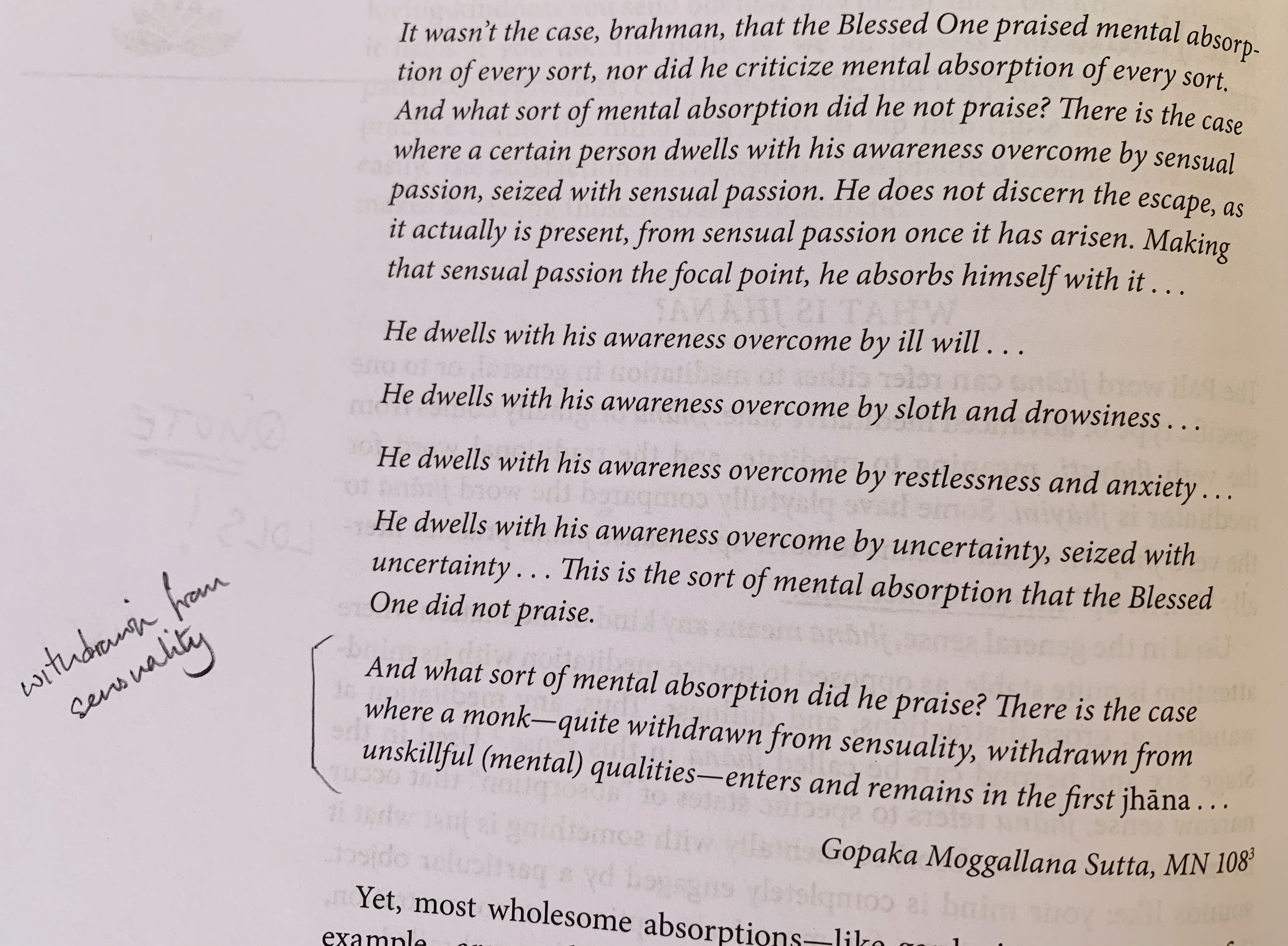
These are reflective notes on my experience of practicing Culadasa’s 10 stage meditation system earlier in 2019. The records in this post are from my 20th consecutive day of practice in the system. All these posts are published retrospectively, with some added commentary. There is a page summary of my TMI series with links in the site overview. For an introduction to this project, see this page.
Day 20
I sat for 4.5 hours in three sessions today. There’s a sense in which I think I’m learning to calibrate a movement between concentrative ‘depth’ and expansive awareness. In the language of TMI, I think that would translate to the distinction between stable attention and peripheral awareness.
I find the intentional dissociation in the internalized, concentrative state quite ‘unnatural’. My somewhat inadequate description of this sensation is that it’s like a whole-body fizziness with deeply cocooned awareness. There’s no sense of being in situ. It’s like a suspension of contextual presence so as to expand ‘into’ sensational consciousness. The sensation isn’t relational or reactive.
As awareness moves out from this pulsy, internalized state, sensations become very pleasant. There’s a light breeze from the window: I become aware of the feeling of the breeze on my skin pleasurable, light waves of sensation moving all over my body.
Commentary
The result of shi-ne, thought-free expansive awareness, is unnatural in that it’s not a condition that we’re physically adapted to experience normally and consistently. It’s a condition we can cultivate and familiarise. It seems clear that it’s also possible to familiarise profoundly concentrative states, the jhanas. What’s the point, in either case?
Developing the capacity to rest in a relatively thought-free state of awareness is a useful contribution to personal psychological, spiritual and emotional development. Thinking less and being aware of thoughts as they occur helps you think more clearly. Habitual patterns of narrative become apparent. You notice previously hidden connections between emotional bottlenecks and modes of thinking. Familiarity with a state of conscious presence with absence of thought (emptiness) is the prerequisite for Buddhist tantric practices of mind. Developing this kind of mental dexterity makes it possible to engage in some physical and sensation-oriented practices that are difficult to access otherwise.1
I’m less clear on the function of the deep jhana states as I don’t know them well experientially. Theoretically, they function as states conducive to a full-blown experience of awakening as anatman (no-self). Some systems, such as TMI, do not regard them as necessary prerequisites for this result. More traditionally, they are seen as crucially indispensable stages of the path to end personal suffering.
The effect of leaning further into deeper, concentrative states in my practice thus far is a discernible change in my everyday experience. The more I’m practicing the deep, internalized stuff, the more my every day, inner state is calm, quiet, non-reactive. I think my heartbeat is probably slower. My usual vivid, fluid, more volatile experience of changing reaction and moving sensation gives way to a more peaceful, somewhat self-enclosed awareness.
I’ve seen other people with much more experience of jhana practice than I have engage with the world with a kind of bland, unchanging lack of responsiveness. It’s not a state that I find appealing, but the mode of being fits with the canonical function of jhana: stoppage of sensation to cease being in this world. From that point of view, it works!
I’m sure that has value too, for some people in some contexts. It’s one way to learn how to manage painful emotions and relationships. The perspective from Buddhist Tantra might regard jhana experience as a move towards experiential emptiness: a potentially significant mental accomplishment, one that could contribute to skillful returning into the world of interaction, reaction and fluidity of self.
Footnotes
1. This doesn’t mean that Vajrayana is inaccessible to novices. There are multiple ways to approach Buddhist Tantra as beginner practitioners. I have a draft post about that somewhere down the queue. ↩
